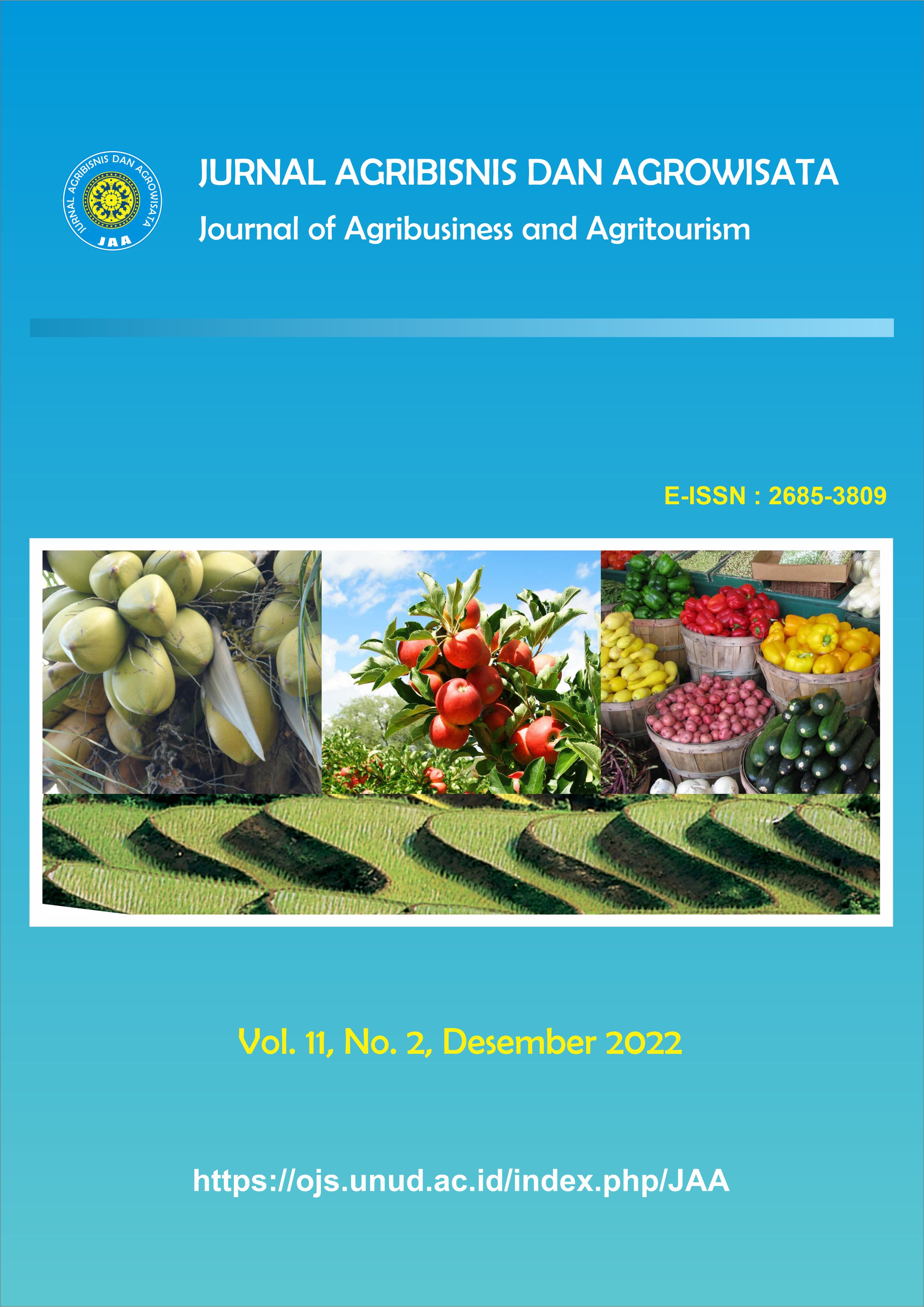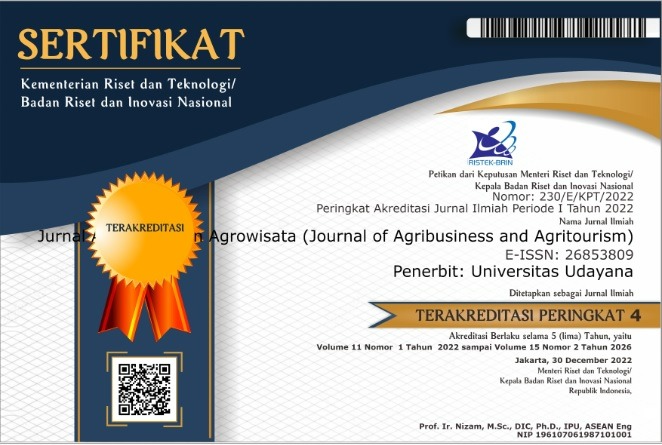Daya Saing Sektor Pertanian dalam Pembangunan Kota Tebing Tinggi Provinsi Sumatra Utara
Abstract
Competitiveness of the Agricultural Sector in the Development of Tebing Tinggi City North Sumatra Province
The rapid land conversion in the agricultural sector in Tebing Tinggi City indicates that the agricultural sector requires more efforts to support the development of Tebing Tinggi City. This study aims to determine the role of the agricultural sector, the leading sector, and the competitiveness of the agricultural sector and other sectors in Tebing Tinggi City for the 2015-2019 period. This study uses a descriptive method, the location quetient (LQ) method, and the shift share method. The results showed that the agricultural sector in Tebing Tinggi City was not the largest contributor and food crops played a major role in the growth of the agricultural sector. Tebing Tinggi City has 12 leading sectors and 5 non-sectors. In the future, there are 5 leading sectors, 7 prospective sectors, 5 lagging sectors, and no mainstay sector. Good competitive sectors, namely, wholesale and retail trade; repair of cars and motorcycles, and the health services sector and social activities. Research suggestions to maintain food security are important to use yards as community gardens, mikan ponds, and livestock, immediately implement the Culinary Tourism City concept, increase incentives or facilities that can support underdeveloped sectors, continue to pay attention to the development of leading sectors, and further research related to sector development strategies left behind.
Downloads
References
BPS Kota Tebing Tinggi. 2019. Produk Domestik Regional Bruto Menurut Lapangan Usaha Kota Tebing Tinggi 2015-2019.
Febriansyah, A. 2017. Tinjauan Atas Proses Penyusunan Laporan Keuangan Pada Young Enterpreneur Academy Indonesia Bandung. Jurnal Riset Akuntansi, 8(2).
Hayati, M., Elfiana, dan Martina. 2017. Peranan Sektor Pertanian Dalam Pembangunan Wilayah Kabupaten Bireuen Provinsi Aceh. Jurnal S.Pertanian, 1(3): 213–222.
Hidayat, E., dan Supriharjo, R. 2014. Identifikasi Sub Sektor Unggulan Kecamatan di Kabupaten Lombok Tengah. Jurnal Teknik Pomits, 3(1): 1–4.
Isserman, Andrew M. 1997. The Location Quotient Approach to Estimating Regional Economic Impacts. Journal of the American Planning Association. 43 (1):.33-41.
Malian, A.H., dan Siregar, M. 2000. Peran Pertanian Pinggiran Perkotaan dalam Penyediaan Kesempatan Kerja dan Pendapatan Keluarga. Jurnal FAE, 18(1): 65-76.
Miller. M..M dan. Wright.1991. Location Quotient Basic Tool for Economic Development Analysis. Economic Development Review, 9(2): 65.
Niara, A., dan Zulfa, A. 2019. Pengaruh Kontribusi Sektor Pertanian dan Industri. Jurnal Ekonomi Regional Unimal, 02(4): 28–36.
Ron Hood, 1998. Economic Analysis: A Location Qutient. Primer. Principal Sun Region Associates. Inc.
Sabahan, S., dan Yuliansyah, Y. 2017. Kajian Daya Saing Sektor Pariwisata Kabupaten Sambas. Jurnal Akuntasi, Ekonomi Dan Manajemen Bisnis, 5(2): 274–278.
Setiawan, S., dan Handoko, R. 2005. Pertumbuhan Ekonomi 2006: Suatu Estimasi dan Arah Pencapaian Pertumbuhan yang Merata dan Berkualitas. Kajian Ekonomi Dan Keuangan, 9(4): 1–16.
Wibisono, E., Amir, A., dan Zulfanetti, Z. 2019. Keunggulan Komparatif dan Kompetitif Sektor Industri Pengolahan di Provinsi Jambi. Journal of Regional and Rural Development Planning, 3(2): 105–116.







